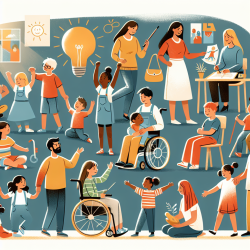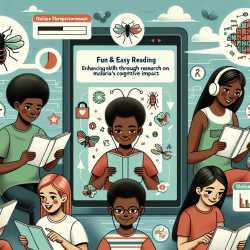Introduction
In the realm of educational development, the integration of physical activity into the academic environment has been recognized for its myriad benefits, particularly in primary education. However, the feasibility of implementing active breaks (ABs) in secondary schools remains underexplored. A recent study titled Investigating Facilitators and Barriers for Active Breaks among Secondary School Students: Formative Evaluation of Teachers and Students delves into this topic, providing valuable insights for practitioners aiming to enhance student outcomes through physical activity.
Understanding the Study
The study utilized focus groups comprising 20 teachers and 10 secondary school students to explore the facilitators and barriers to implementing ABs. This qualitative approach, guided by the socio-ecological model, offers a nuanced understanding of the individual, social, and environmental factors influencing the adoption of ABs in secondary schools.
Key Findings
Barriers
- Individual Level: Teachers expressed concerns about their ability to manage ABs effectively, citing fears of appearing inadequate or losing control of the classroom. Students noted potential disruptions to their focus and the challenge of transitioning back to academic tasks.
- Social Level: Teachers worried about student injuries and the potential for social exclusion during ABs. Students highlighted concerns about classroom management and time constraints.
- Environmental Level: Both groups identified physical space limitations and scheduling challenges as significant barriers to AB implementation.
Facilitators
- Individual Level: Teachers recognized the potential cognitive benefits of ABs and the importance of administrative support. Students emphasized the motivational aspect of game-like exercises.
- Social Level: Collaboration with colleagues and the school board was seen as crucial for successful implementation. Students noted that ABs could provide teachers with a much-needed energy respite.
- Environmental Level: Simple, static exercises that require minimal space were suggested as practical solutions.
Practical Implications for Practitioners
For practitioners in the field of speech language pathology and educational development, these findings underscore the importance of a collaborative, data-driven approach to implementing ABs. By addressing the identified barriers and leveraging the facilitators, educators can enhance student engagement and cognitive performance.
Practitioners are encouraged to engage in further research and consider the unique needs of their educational environments. Involving both teachers and students in the codesign of AB programs can ensure that interventions are tailored to the specific context and are more likely to be successful.
Conclusion
The integration of ABs in secondary schools presents both challenges and opportunities. By adopting a structured, evidence-based approach, practitioners can overcome barriers and create a supportive environment that promotes physical activity and enhances educational outcomes. For those interested in delving deeper into the research, the original study provides a comprehensive exploration of these themes.
To read the original research paper, please follow this link: Investigating Facilitators and Barriers for Active Breaks among Secondary School Students: Formative Evaluation of Teachers and Students.










